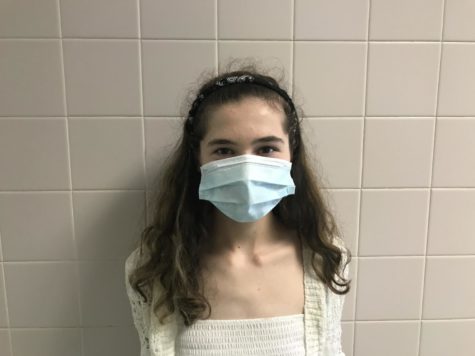Lack of funding means paying for school lunches next year
Freshman Keira O’Hagan buys free lunch in the line on May 6.
June 1, 2022
School lunches and breakfasts have been free for students the whole year which has benefitted all students who prefer not to pack lunch. However, this will be changing in June of 2022.
As part of the COVID relief legislation, money provided to the U.S. Department of Agriculture (USDA) was used to provide free meals to students nationwide this school year.
“[No more free lunches] is a disappointment,” freshman Stephen Schuetz said. “It was way easier and faster to just get lunch in line and walk out instead of [standing] in a line to wait for someone to finish putting their pin in.”
According to Educational Data, the average student spends $170 on school lunches per year. This school year, students were able to use the money for other expenses.
“I think less people will be buying school lunch next year because it will cost money, and it was really easy to go into the lunch line and get something you want, then walk out.” Schuetz said. “Most people probably forgot their PIN number in the past few years.”
The Washington Post states that coronavirus relief packages added $8.8 billion in additional funding for child nutrition. According to ABC13, School Nutrition Association asked Congress to rethink the decision to get rid of free lunch so families could be given more time to adjust. They warned that because schools have to adjust spending, things such as staffing could be affected.
“Hopefully, the food will get better now that we’re paying because there was a clear change when food became stale or moldy,” Bravo said. “[The food was] increasingly more generic and watered down, and there was a lack of food choices.”
FCPS provides free lunch for low income students and will continue to do so. Any students who qualify for these meals will be provided with them free of charge. Families who earn less than 130% of the poverty level qualify for free lunch, and roughly 34% of students in Fairfax County are eligible.
“I’m glad that we’re finally going to be able to pay for better food, lunch salads and such,” junior Micaela Bravo said. “But I think we should have the option to have the basic meals for free.”
According to Food Research Action Center, school lunches are important for students’ health and well-being, considering they need the nutrition to help them get through the day and learn. Receiving low-priced or free lunches reduces food insecurity, obesity rates and poor health.
Since school lunches will not be free next year for many students, those who plan to pack their lunches should be mindful of how to maintain a healthy balance of foods. Kids Health states that in order to pack a healthy and nutritious lunch, students should make sure to pack fruits, veggies, and whole grains, keep the meal balanced, and mix it up every once in a while.
“I will not be buying lunch very often next year, and I’ll try to make lunch because it tastes better than school lunch and is simply healthier,” sophomore Bella Witter said.



